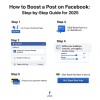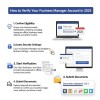🎙️ How Discord Became the New Hub for Niche Communities
The Rise of Micro-Engagement, Custom Culture, and Real-Time Belonging
Section 1: From Gaming Roots to Cultural Infrastructure — Discord’s Unexpected Evolution
When Discord launched in 2015, it was a humble voice and text chat app built for gamers frustrated with clunky alternatives like TeamSpeak and Skype. Its original mission was simple: make it easier to talk while playing games. But what started as a utility for multiplayer coordination quickly evolved into something far more profound—a digital infrastructure for community.
By 2025, Discord has transformed into a cultural backbone for niche communities across industries, interests, and identities. From indie musicians and sneaker collectors to crypto developers and parenting support groups, Discord now hosts millions of servers that function like virtual living rooms, coworking spaces, and creative studios.
🕹️ The Gaming Foundation
Discord’s early success came from its seamless voice chat, low latency, and intuitive server structure. Gamers could create invite-only spaces, organize channels by game or topic, and jump into voice calls without friction. These features laid the groundwork for what would become Discord’s greatest strength: modularity.
Unlike traditional social platforms that emphasize broadcasting (e.g., Twitter, Instagram), Discord emphasized intimacy and segmentation. Each server was its own universe, with its own rules, roles, and culture. This architecture made it ideal for niche communities—groups that didn’t want to shout into the void, but rather build something together.
🧬 The Shift Toward Micro-Communities
As social media fatigue set in—driven by algorithmic noise, performative posting, and declining trust—users began seeking smaller, more intentional spaces. Discord was perfectly positioned to meet this need.
By 2023, Discord had already begun attracting non-gaming communities: study groups, book clubs, startup teams, and fandoms. By 2025, it had become the go-to platform for micro-communities—tight-knit groups centered around shared interests, values, or goals.
These communities weren’t just social—they were functional. Writers used Discord to workshop drafts. Developers used it to debug code. Educators used it to run virtual classrooms. The platform’s flexibility allowed it to morph into whatever the community needed.
🧰 Infrastructure for Belonging
Discord’s success lies in its infrastructure:
- Channels: Organize conversations by topic, function, or mood.
- Roles & Permissions: Create hierarchies, access levels, and moderation systems.
- Voice & Video: Enable real-time collaboration and hangouts.
- Bots & Integrations: Automate tasks, gamify engagement, and connect external tools.
- Nitro & Premium Features: Offer monetization and customization for power users.
This infrastructure doesn’t just support communication—it supports culture. Communities can build rituals, inside jokes, shared resources, and governance models. In essence, Discord servers are digital villages.
Section 2: Why Niche Communities Thrive on Discord — Engagement, Customization, and Trust
Discord’s architecture isn’t just functional—it’s psychological. It taps into core human needs: belonging, identity, and agency. In an era where mass platforms feel impersonal and extractive, Discord offers intimacy, control, and authenticity.
🧠 Engagement Over Reach
Traditional social media platforms prioritize reach: how many followers, likes, or impressions you get. Discord flips this model. It prioritizes engagement—how deeply people interact, contribute, and co-create.
In a Discord server, success isn’t measured by virality—it’s measured by participation. Are members showing up to voice chats? Are they sharing resources? Are they helping each other? This shift from passive consumption to active contribution is what makes Discord communities resilient.
🎨 Customization as Culture
Every Discord server is a canvas. Admins can design their space with:
- Custom emojis and branding
- Unique role hierarchies (e.g., “Mentor,” “Newbie,” “Moderator”)
- Automated onboarding flows
- Channel naming conventions that reflect community tone
This customization fosters identity. Members feel like they’re part of something distinct—not just another generic group. It also allows communities to evolve organically, adapting their structure as needs change.
For example, a server for Thai parenting educators might start with three channels—“Tips,” “Questions,” and “Resources.” Over time, it could expand to include “Live Q&A,” “Product Reviews,” and “Campaign Planning.” The server grows with the community.
🔒 Trust and Safety
Discord’s permission system allows for granular control. Admins can restrict access to sensitive channels, moderate behavior, and enforce rules. Bots like MEE6 and Dyno help automate moderation, while features like slow mode and audit logs prevent spam and abuse.
This control fosters trust. Members know their data isn’t being sold, their conversations aren’t being algorithmically manipulated, and their community isn’t being invaded by trolls. In a world of surveillance capitalism, Discord feels like a safe haven.
📈 Monetization and Sustainability
Discord has also introduced monetization tools:
- Server Subscriptions: Allow creators to charge for premium access.
- Nitro Boosts: Let members support servers with perks.
- Premium App Integrations: Enable developers to earn revenue from bots and tools.
These features empower creators to build sustainable communities. A niche group—say, Thai-English bilingual educators—can offer paid workshops, exclusive content, or consulting services directly through Discord.
Section 3: The Future of Digital Belonging — Discord’s Role in the Next Era of Community
As we move deeper into the 2020s, the concept of “community” is being redefined. It’s no longer just about shared interests—it’s about shared infrastructure, shared rituals, and shared outcomes. Discord is at the center of this shift.
🌐 Decentralized Community Building
Discord’s server model is inherently decentralized. There’s no central feed, no algorithmic gatekeeper, no forced virality. Each server is its own sovereign space, governed by its members.
This decentralization is critical in an era of platform fatigue. Users want autonomy. They want to choose their spaces, shape their culture, and opt out of the noise. Discord gives them that power.
It also enables cross-pollination. Users can belong to multiple servers—each serving a different facet of their identity. A developer might be in a Laravel server, a Thai language learning server, and a parenting support server. Discord becomes the connective tissue between these micro-identities.
🤖 AI, Automation, and Smart Communities
Discord is also evolving with AI. Bots now handle:
- Automated onboarding and role assignment
- Sentiment analysis and moderation
- Content summarization and translation
- Event scheduling and reminders
These tools make communities more efficient and inclusive. For example, a bilingual server can use AI to auto-translate Thai-English messages, ensuring seamless communication. A study group can use bots to summarize long threads or generate flashcards.
As AI becomes more integrated, Discord servers will function like smart communities—spaces that adapt to member needs in real time.
🧭 Community as Strategy
For brands, Discord isn’t just a platform—it’s a strategy. Instead of broadcasting ads, brands can build servers that offer value: tutorials, support, behind-the-scenes access, or co-creation opportunities.
But success requires a shift in mindset. Brands must think like community managers, not marketers. They must invest in moderation, culture-building, and member engagement. The payoff? Loyalty, insight, and organic growth.
SmartLearning.in.th, for example, could use Discord to:
- Host live Q&A sessions with educators
- Share bilingual resources and lesson plans
- Segment parents by age group or learning goals
- Run feedback loops for product development
This isn’t just marketing—it’s ecosystem building.
🔮 What’s Next?
Discord’s roadmap includes:
- Verified roles and identity integrations (e.g., PayPal, LinkedIn)
- Expanded monetization for developers and creators
- Enhanced app directories and server discovery
- AI-powered moderation and personalization
These features will make Discord even more powerful as a hub for niche communities. It will become not just a chat app—but a platform for belonging, learning, and collaboration.
📝 Final Thoughts
Discord’s rise as the new hub for niche communities is no accident. It’s the result of thoughtful architecture, cultural sensitivity, and user-first design. In a digital world that often feels loud, extractive, and impersonal, Discord offers quiet, intentional spaces where people can build, share, and grow.
Whether you’re a creator, educator, entrepreneur, or strategist, Discord is more than a tool—it’s a canvas. And in 2025, the communities that thrive will be the ones that treat it as such.



